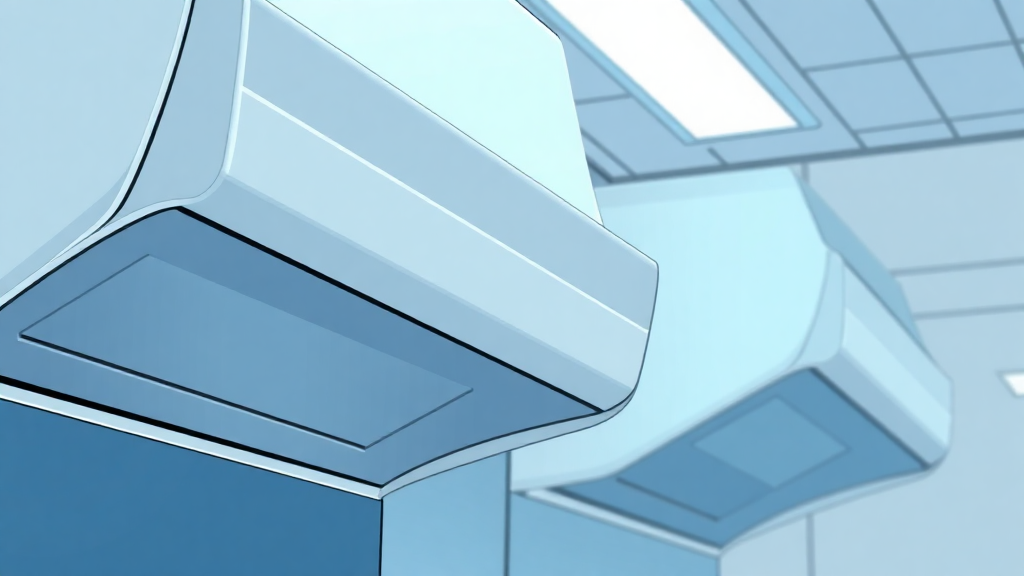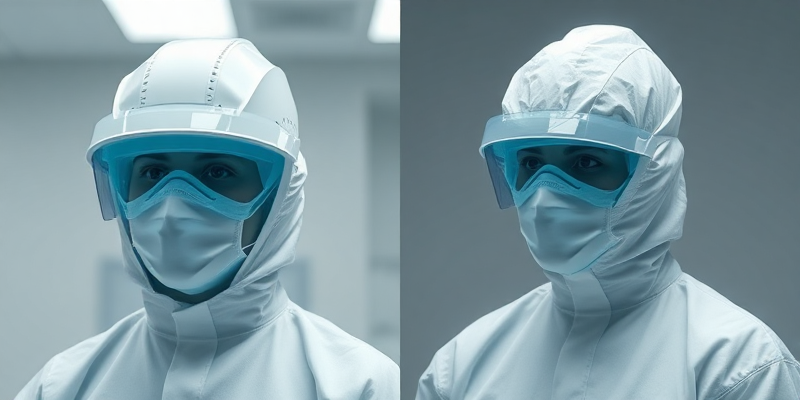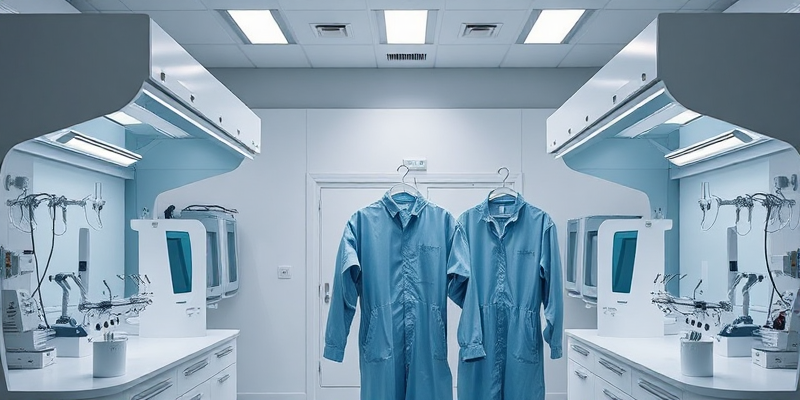Оптимизация капюшков в чистоте для эргономики и соответствия

Introduction: Balancing Protection and Comfort in Cell Therapy Environments

Picture this: Your cell therapy technicians are six hours into an intensive processing session. Despite the critical nature of their work, you notice them constantly adjusting their hoods, rolling their shoulders, and stretching their necks. These subtle movements aren’t just signs of discomfort—they’re potential contamination risks in your controlled environment.
In cell therapy facilities, where even microscopic contamination can compromise product integrity worth thousands or millions of dollars, cleanroom hoods represent the critical barrier between human-generated particles and valuable biological materials. Yet many facilities struggle with a fundamental tension: maximizing contamination control while ensuring staff can work comfortably for extended periods.
“The hood is the forgotten hero of cleanroom apparel,” notes one cell therapy production manager we interviewed. “Everyone focuses on gowns and gloves, but when a hood causes discomfort, it leads to adjustments and potential breaches that can compromise an entire batch.”
Cleanroom hoods with inadequate air permeability (below the optimal 5-10 CFM range) create a stuffy, uncomfortable environment that increases employee fatigue and reduces productivity. Conversely, hoods with excessive permeability may not provide sufficient particle containment. This delicate balance becomes even more crucial in cell therapy environments, where processes often require sustained concentration over lengthy periods.
Explore breathable cleanroom hood options that strike the right balance between comfort and contamination control. The latest designs incorporate advanced fabrics that maintain critical barrier properties while allowing sufficient airflow to prevent the heat buildup and discomfort that lead to protocol-breaking adjustments.
As we explore the world of cleanroom hood optimization, remember that this isn’t merely about regulatory compliance or staff comfort—it’s about creating an environment where both protection and productivity can flourish simultaneously in your cell therapy facility.
Compliance: Standards for Cleanroom Hoods in Cell Therapy Applications

Navigating the complex world of cleanroom apparel regulations is challenging, particularly for cell therapy facilities operating under stringent ISO standards. Cleanroom hoods must meet specific requirements based on your classification level, with ISO Clas 5 and 6 environments typically demanding the most rigorous contamination control.
According to recent industry research, facilities with properly certified cleanroom garments experience 67% fewer contamination incidents than those using non-compliant alternatives. This statistic becomes particularly significant in cell therapy applications, where product los can have devastating financial and patient care implications.
The critical specifications for cleanroom hoods include:
1. **Particle filtration efficiency**: Must trap particles at the specified micron level for your ISO clas
2. **Air permeability**: Optimal range of 5-10 CFM for balancing comfort and containment
3. **Material compatibility**: Free from materials that could contaminate sensitive cell cultures
4. **Ergonomic design**: Conforming to human factors standards that prevent contamination risks from adjustment
“Many facilities fail to recognize that their hoods must be validated as part of their overall contamination control strategy,” explains a quality assurance specialist at a leading cell therapy company. “It’s not enough to simply purchase ‘cleanroom-grade’ hoods—they must be specifically validated for your processes.”
To ensure your facility remains compliant, regular testing of hood materials is essential to verify they meet specifications throughout their lifecycle. Master the cleanroom suit testing proces to maintain continuous compliance while optimizing your contamination control strategy.
Additionally, facilities producing products under GMP guidelines must ensure their cleanroom hoods meet the more rigorous requirements for pharmaceutical-grade processes. The documentation trail for these garments becomes part of your quality system and may be subject to regulatory inspection.
How Ergonomic Cleanroom Hoods Outperform Alternatives

When comparing traditional cleanroom hoods to ergonomically optimized designs, the differences extend far beyond mere comfort. A systematic evaluation reveals substantial advantages for cell therapy facilities:
| Особенность | Traditional Hoods | Ergonomic Hoods (5-10 CFM) | Impact on Cell Therapy Operations |
|---|---|---|---|
| ——— | —————— | ————————— | ———————————- |
| Air Permeability | 2-4 CFM or >15 CFM | 5-10 CFM (optimal range) | Balanced containment with comfort |
| Neck Design | Fixed, often restrictive | Articulated, follows movement | Reduces contamination risk from adjustment |
| Material Weight | Often heavy (180+ gsm) | Lightweight (120-150 gsm) | Les fatigue during long processing sessions |
| Seam Construction | Exposed stitching | Bound or ultrasonically welded | Minimizes particle shedding near critical zones |
| Face Opening | Standard one-size | Customizable elasticity | Better seal with les pressure |
According to workplace ergonomics studies, properly designed cleanroom hoods can reduce neck and shoulder strain by up to 43% during extended processing procedures. This reduction directly correlates with fewer movements that could compromise the sterile field.
“We switched to ergonomic hoods with optimal air permeability last year,” reports the operations director at a cell therapy manufacturing facility. “The difference was immediately apparent—our staff reported significantly les discomfort during critical processes, and our environmental monitoring data showed a measurable decrease in human-generated particulates.”
For additional protection in high-risk environments, explore durable latex-free cleanroom handwear options that complement your hood strategy with appropriate hand protection.
The advancement in materials science has enabled this new generation of cleanroom hoods to maintain critical barrier properties while significantly improving the human factors that previously led to contamination risks. The specialized fabrics now deliver optimal filtration efficiency without the stifling effect of older materials, making them particularly valuable for cell therapy applications where precision work must be maintained for extended periods.
Busines Benefits of Switching to Ergonomic Cleanroom Hoods

The investment in optimized cleanroom hoods delivers measurable returns for cell therapy facilities beyond improved compliance and contamination control. The busines case becomes compelling when examining the complete operational impact.
Industry analysis reveals that facilities implementing ergonomically designed cleanroom garments experience an average productivity increase of 12% in critical processing operations. This improvement stems from reduced fatigue and fewer breaks needed during extended procedures.
The comprehensive busines benefits include:
1. **Reduced gowning time**: Ergonomic hoods with intuitive designs and better-fitting face openings reduce the average gowning time by 30-45 seconds per employee—a significant saving when multiplied acros teams and shifts.
2. **Extended wear duration**: Properly designed hoods with 5-10 CFM air permeability extend comfortable wear time by 30-40%, reducing the need for breaks that interrupt workflow and increase contamination risks.
3. **Decreased error rates**: Facilities report a measurable decrease in processing errors when staff comfort is optimized, directly impacting product quality and reducing costly investigations.
4. **Improved staff retention**: Cleanroom comfort consistently ranks among the top factors in specialized staff satisfaction and retention—a crucial consideration in the competitive cell therapy talent market.
For facilities managing multiple cleanroom garment types, learn how to optimize cleanroom coveralls alongside your hood strategy for comprehensive contamination control.
“The calculus is straightforward,” explains a financial director at a cell therapy contract manufacturing organization. “Even a single contamination event avoided pays for our entire annual investment in premium cleanroom garments. The productivity gains are essentially a bonus.”
When evaluating the cost-benefit equation, consider the complete lifecycle cost rather than just the purchase price. Higher-quality ergonomic hoods typically offer extended usable life, reducing the effective per-use cost despite higher initial investment. Additionally, many forward-thinking facilities are now including employee comfort metrics in their equipment validation protocols, recognizing the direct correlation between comfort and contamination control effectivenes.
Contamination Control: Why Ergonomic Hood Design Wins

The fundamental mission of cleanroom hoods—effective contamination control—receives a significant boost from ergonomic design considerations. The connection between comfort and containment is particularly evident in the critical neck and face area, where traditional hoods often create vulnerability.
Environmental monitoring data from cell therapy facilities shows that optimized cleanroom hoods can reduce particle counts in the critical ISO 5 zone by up to 78% compared to standard designs. This dramatic improvement stems from two primary factors: better containment and reduced adjustment.
Ergonomic hoods with precisely engineered 5-10 CFM air permeability create the ideal microenvironment around the operator’s head and neck. This balanced approach:
1. **Contains particles effectively**: Prevents human-generated particles from escaping into the critical processing zone
2. **Reduces adjustment needs**: Comfortable designs minimize the touching and repositioning that create contamination risks
3. **Maintains awarenes**: Prevents the cognitive fatigue that leads to protocol lapses
“We underestimated how much hood discomfort was affecting our contamination control,” admits a quality manager at a leading cell therapy facility. “Once we optimized this element, our environmental monitoring results improved dramatically in the most critical processing areas.”
For comprehensive protection in your cleanroom environment, consider premium cleanroom shirts designed to work in harmony with your optimized hood strategy.
The specialized requirements of cell therapy applications make this ergonomic approach particularly valuable. Unlike some manufacturing environments where processes are largely automated, cell therapies often require intensive hands-on manipulation in ISO 5 environments. The human factor becomes the predominant contamination risk, making garment design that minimizes human-generated contamination exceptionally valuable.
Case Study: Ergonomic Hood Implementation at GenCell Therapeutics

When GenCell Therapeutics expanded their CAR-T manufacturing capacity, they faced a challenge familiar to many cell therapy facilities: maintaining strict contamination control while scaling up operations with new personnel. Their existing cleanroom garment strategy, including standard-design hoods, was creating both comfort and compliance challenges.
“Our environmental monitoring was showing increasing particle counts in critical processing areas,” explains their Head of Manufacturing. “After investigation, we determined that staff were frequently adjusting uncomfortable hoods during lengthy procedures.”
The facility implemented a comprehensive garment optimization program, with special attention to hood design. They selected models with:
- Air permeability in the optimal 5-10 CFM range
- Ergonomically designed neck and shoulder areas
- Lightweight, breathable material that maintained barrier properties
- Improved face opening design with customized elasticity
The results were significant and measurable. Within three months of implementation:
- Environmental monitoring showed a 63% reduction in particle counts in Grade A zones
- Staff comfort surveys indicated an 85% satisfaction improvement
- Proces interruptions due to garment adjustment decreased by 71%
- Batch rejection rates decreased by 4.8%, representing significant cost savings
For facilities working acros different cleanroom classifications, learn about navigating cleanroom gown certifications to ensure appropriate protection levels throughout your facility.
“The investment in optimized hoods paid for itself within the first quarter,” notes their Finance Director. “When you calculate the value of a single batch of cell therapy product, the ROI becomes overwhelmingly positive.”
GenCell’s experience highlights a crucial insight for cell therapy facilities: even seemingly minor improvements in cleanroom garment design can yield significant operational benefits when implemented thoughtfully.
Часто задаваемые вопросы
- How often should cleanroom hoods be replaced to maintain optimal protection?
- The replacement schedule depends on usage intensity and reprocessing methods. In typical cell therapy applications with regular laundering, hood replacement every 30-50 processing cycles is recommended. Always inspect for signs of degradation such as thinning material, stretched face openings, or visible damage. Facilities using aggressive sanitization methods may need more frequent replacement.
- What material properties should we prioritize for cell therapy applications?
- Prioritize low-particle-shedding materials with air permeability in the 5-10 CFM range. Look for polyester blends with confirmed compatibility with your cleaning agents. Semiconductor facilities face similar challenges and often use comparable materials optimized for both contamination control and operator comfort during extended wear.
- How do we balance hood comfort against contamination control requirements?
- The 5-10 CFM air permeability range represents the scientifically validated sweet spot between comfort and containment. Ensure proper fit around the face opening and neck area to minimize adjustment needs. Some facilities implement a fitted sizing program rather than one-size-fits-all approaches, reporting better compliance and reduced contamination risks.
- Can hood design really impact contamination rates in our cell processing?
- Absolutely. Environmental monitoring consistently shows that human-generated particles account for 65-80% of contamination in manual cell processing. Hood design directly impacts both particle containment and operator behavior (adjustments, repositioning) that can release particles into critical zones.
- What testing should we require from hood suppliers to verify performance?
- Request comprehensive testing data including air permeability (ASTM F737), particle filtration efficiency, and material compatibility with your cleaning agents. For GMP environments, documentation should include lot traceability and material certifications. Leading suppliers should provide statistical proces control data demonstrating consistent manufacturing quality.
- How should we integrate hood selection into our overall contamination control strategy?
- Hood selection should be part of a comprehensive garment validation proces that includes risk assessment of your specific processes. For critical applications, consider environmental monitoring specifically correlated to garment performance. Many facilities now include comfort assessment as a formal validation criterion, recognizing its impact on contamination control.
- What training should operators receive regarding proper hood use?
- Training should cover proper donning techniques, fit verification, and awarenes of behaviors that compromise hood effectivenes. Include specific guidance on avoiding unnecessary adjustments during critical procedures and recognizing when a hood requires replacement. Periodic retraining should addres any trends identified in environmental monitoring.









